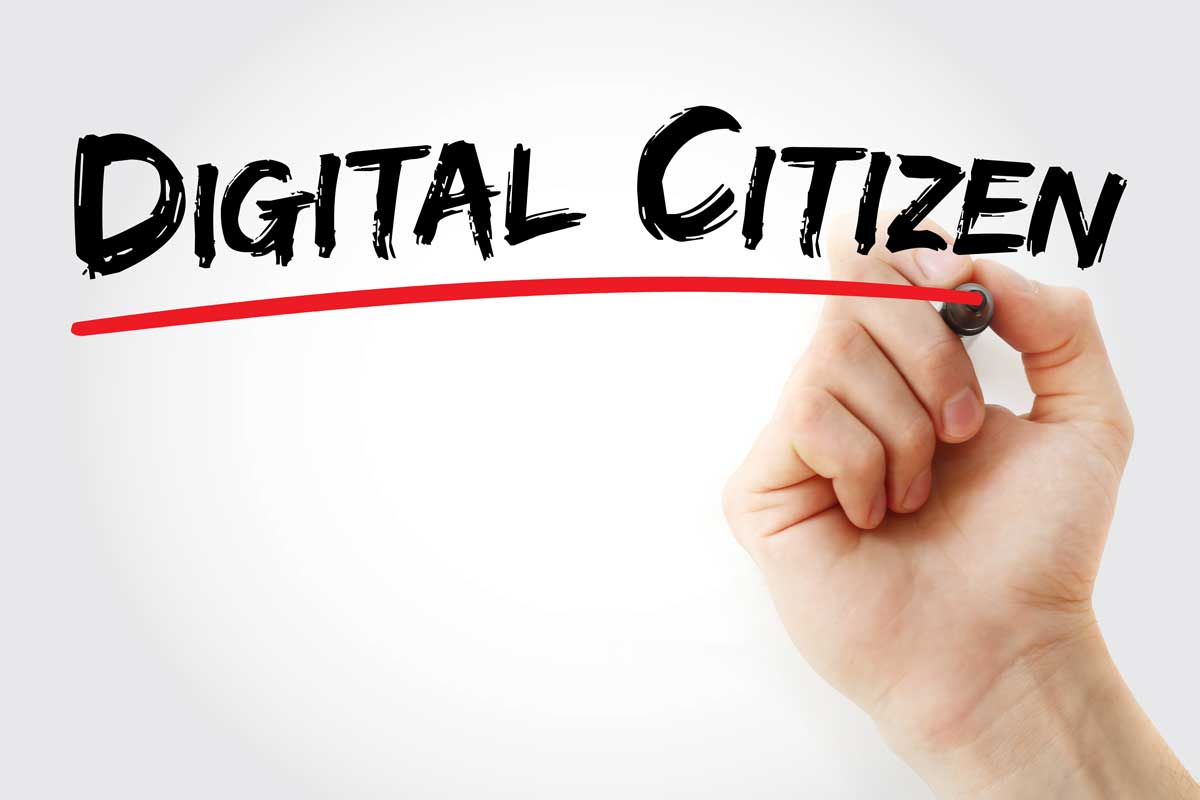
Typing lessons and technology education are vital to a 21st-century education. However, they are not enough on their own. Students need additional skills to navigate digital communities and make smart choices online.
Adding a digital citizenship component to your school typing program allows you to give students background knowledge that will inform their future decisions, both online and offline. While teaching students basic technology skills, you will also be teaching them how to put those skills to good use.
What is Digital Citizenship?
Digital citizenship is the responsible use of technology. It includes healthy internet habits, understanding online privacy and safety, and maintaining a supportive communication style in digital communities, among other skills.
As with any other type of citizenship, digital citizenship places an emphasis on treating people and spaces with respect. In the era of online bullying, it is particularly important for students to learn respectful online communication skills from an early age.
Digital citizenship also involves using technology in a safe, constructive manner. Everyone with access to the internet should know how to protect their privacy, avoid scams, and monitor their usage habits.
What Should Be Included in a Digital Citizenship Curriculum?
A digital citizenship curriculum should teach students how to access the internet, but that’s only the beginning. It should also teach students how to communicate with kindness, respect others privacy, and seek other perspectives — all in an online context. The goal is to learn how to contribute to online communities in healthy ways.
According to the International Society for Technology in Education (ISTE), a digital citizenship curriculum should meet the following standards:
- Students should use technology to actively choose and develop competency in their learning goals.
- Students should understand the rights, responsibilities, and opportunities that come with living in an interconnected digital world. They should act in a safe, legal, and ethical manner.
- Students should curate resources that help them create and learn.
- Students should use a variety of technologies to design solutions to the problems they identify.
- Students should develop strategies for understanding and solving problems using technology.
- Students should communicate clearly and express themselves creatively using the appropriate digital media tools and formats.
- Students should use digital tools to broaden their perspective and collaborate with others, both locally and globally.
At Typing Agent, our Digital Citizenship curriculum is aligned with ISTE standards and teaches students how to safely use the internet, including protecting their passwords, dealing with blinking ads, and not signing up for unnecessary credit cards. Our students learn how to identify and avoid plagiarism, amongst other things.
We also work on building supportive communication skills and preventing cyberbullying.
How Can I Teach Digital Citizenship Effectively?
Students learn digital citizenship better when they can discuss what they are learning with their teachers and classmates. Since this field is so community-focused, it makes sense to teach in a social context.
Students who are old enough to be active on social media can have discussions based on relevant real-life situations they have encountered. At any age, tools such as teacher guides can help facilitate quality discussions.
It’s also a good idea to back up class discussions with other types of learning experiences. That could mean having students watch engaging videos, play games that reinforce the concepts, complete online scenario-based quizzes, or use other interactive educational technology. Multimedia components are often an effective way to boost learning. Typing Agent offers a fun series of videos designed to teach the ISTE standards of Digital Citizenship.
Most importantly, digital citizenship should be taught in tandem with other technology skills. As students become more skilled with keyboarding and coding use, they will quickly find themselves in situations that require a solid understanding of digital citizenship.
Can I Integrate Digital Citizenship into My Typing Program?
Yes, you can! Some typing programs, like Typing Agent, include digital citizenship modules or videos that can be taught alongside keyboarding lessons.
Our digital citizenship curriculum is aligned with ISTE standards. With exciting superhero-themed videos, interactive quizzes, and typing activities that reinforce digital citizenship concepts, our web-based curriculum can be integrated into any classroom. Contact us today to begin your demo.


